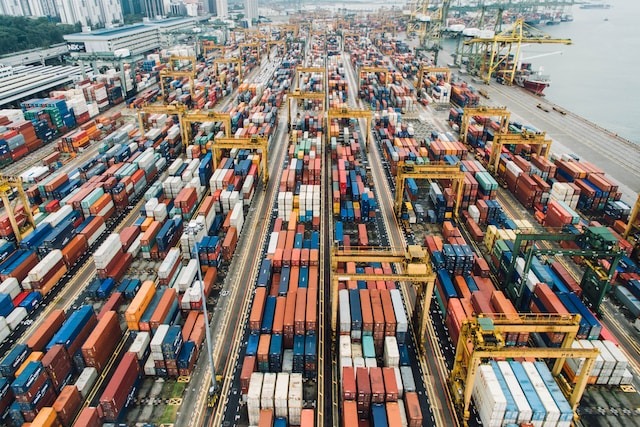Understanding the landscape for selling from the UK to the EU after Brexit is crucial for businesses trading across Europe.
While it’s been a few years since the UK parted ways with the EU, the effects are still very much a part of our export and import reality.
Here’s a rundown of the main points you should keep in mind:
Tariffs when selling from UK to EU after Brexit
One of the most pressing issues for selling into the EU is tariffs. These are taxes on goods coming into a country, varying depending on what you’re exporting.
The good news? The UK-EU trade agreement aims for zero tariffs and zero quotas on goods, provided they meet the relevant rules of origin.
However, ‘zero tariffs’ doesn’t mean ‘zero complications’. It’s essential to know your product’s Harmonized System (HS) code to identify what tariff applies – more on this shortly.
Rules of origin: where was it made?
The ‘rules of origin,’ also called ‘economic nationality,’ establish where a product was made, affecting the tariffs it may or may not incur.
For example, if you’re a manufacturer using imported components, you must ensure that enough of the product’s value was created locally to qualify for zero tariffs.
If you don’t meet these rules, your goods could be subject to a tariff when sold into the EU.
VAT and duties
Before Brexit: Before Brexit, VAT was a relatively straightforward affair for UK businesses selling into the EU.
Goods could be sold to other EU countries without VAT, and the buyer would account for VAT at their own country’s rate.
Post-Brexit: Now, the uniformity has been replaced by a patchwork of individual country regulations. This has resulted in a more complicated system where UK businesses need to get to grips with the VAT rules of each EU member state they’re trading with.
Example 1: Suppose you’re a UK-based business selling bespoke kitchen appliances. If you’re selling these to consumers in France, you’ll be required to register for VAT in France and charge French VAT on your sales. Depending on the scale of your operations, you may also need to appoint a tax representative in France to handle VAT compliance on your behalf.
Example 2: If you’re an eCommerce retailer shipping small-value items to various EU countries, you might face different thresholds for VAT registration in each country. Germany might require you to register after you’ve sold €100,000 worth of goods, while Belgium’s threshold might be €35,000.
Import duties
Import duties could apply depending on the specific type of goods and the country you’re exporting to. The rate might vary between countries and categories of items.
Example: If you’re in the fashion industry and exporting designer clothing to Italy, you may need to pay import duties even if your goods are produced entirely in the UK. The exact rate will depend on the Harmonized System (HS) clothing classification, but could increase the cost of your export operations.
Customs declarations
Post-Brexit, completing customs declarations has become the norm for UK businesses selling into the EU.
Here’s some key points:
EORI Number: Before even considering exporting, you’ll usually need a UK EORI number starting with ‘GB’. This number is essential for the clearance of goods and should be on all your documentation.
Paperwork: Customs declarations require detailed information about the goods you’re exporting. You’ll need to know the value, origin, and destination of the goods and the HS codes we discussed earlier.
Example: Suppose you’re a craft beer producer exporting speciality ales to Spain. You’ll need to include information like the alcohol percentage, quantity in liters, type of beverage, and the materials used for packaging in your customs declaration. Even minute discrepancies can cause hold-ups at customs.
Transportation: logistical considerations
Finally, the logistical aspects of exporting goods have also become tricky.
Whether you’re shipping construction materials or high-tech gadgets, you must account for potential border checks delays, new freight costs, and additional documentation requirements.
Final thoughts
While it may seem daunting, many businesses simply work their way through the rules and regulations as and when they become relevant.
Some businesses, like Etsy, run schemes to simplify the process of selling to the EU, but overall, there’s a lot to take into account.
If you trade often with EU countries, consider consulting professionals who are up-to-date on the intricacies of post-Brexit trade.
Stay informed and be prepared and your business can continue to thrive in the EU market.
Get in touch to talk about exports to the EU.
